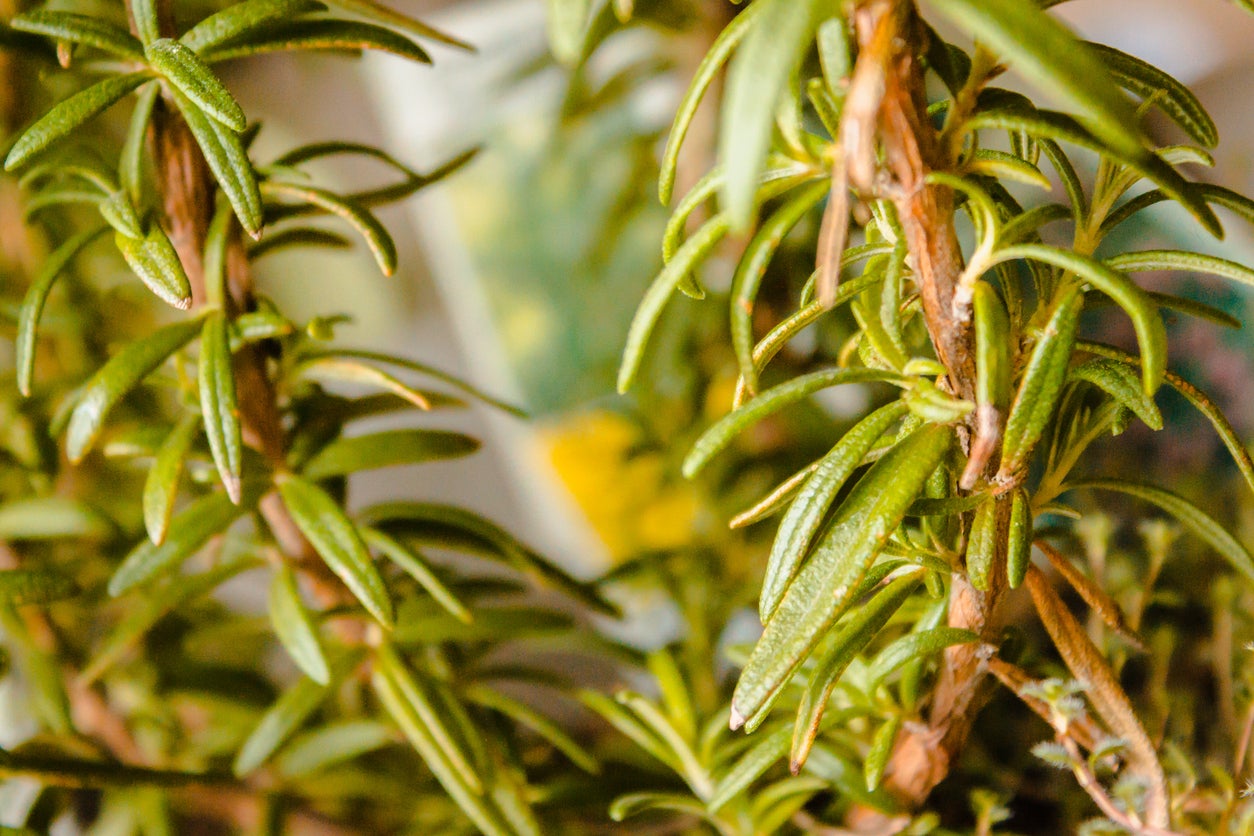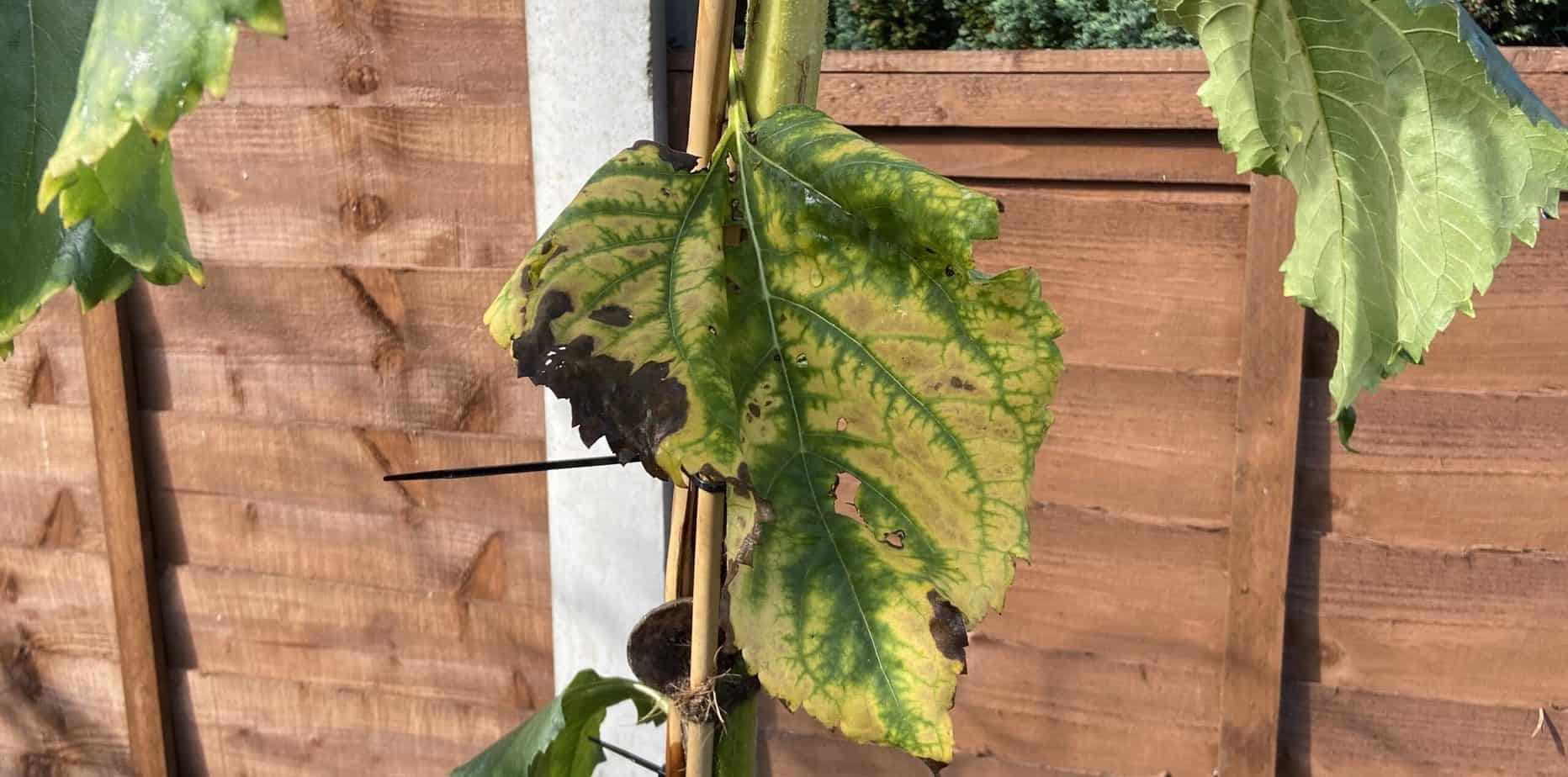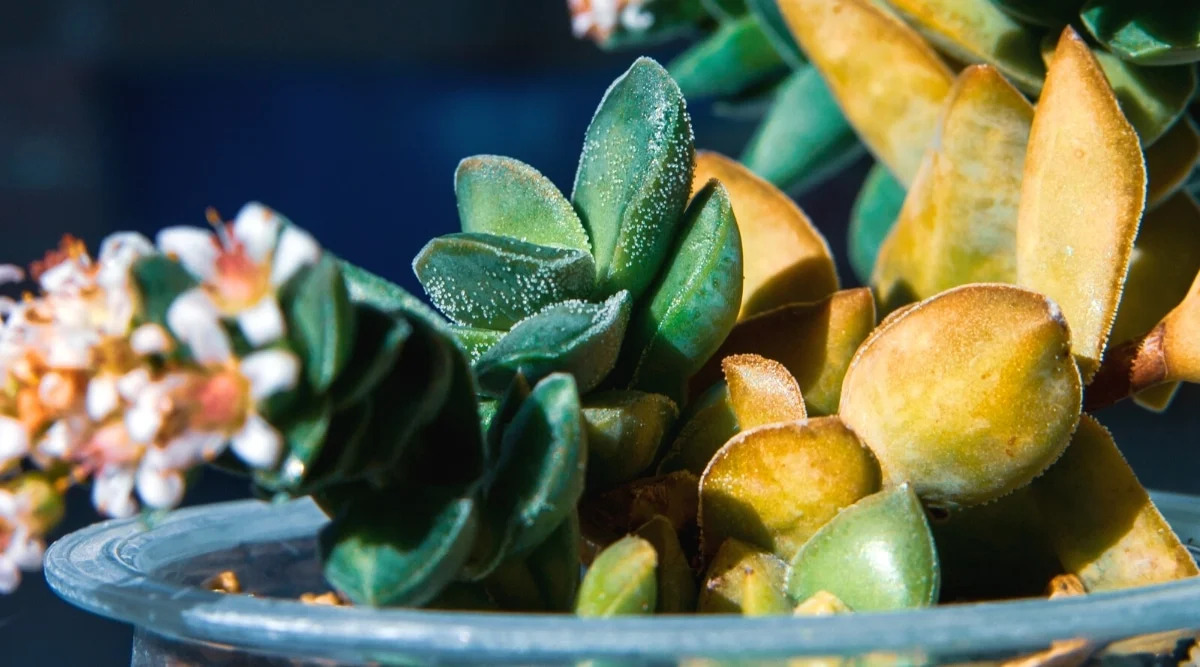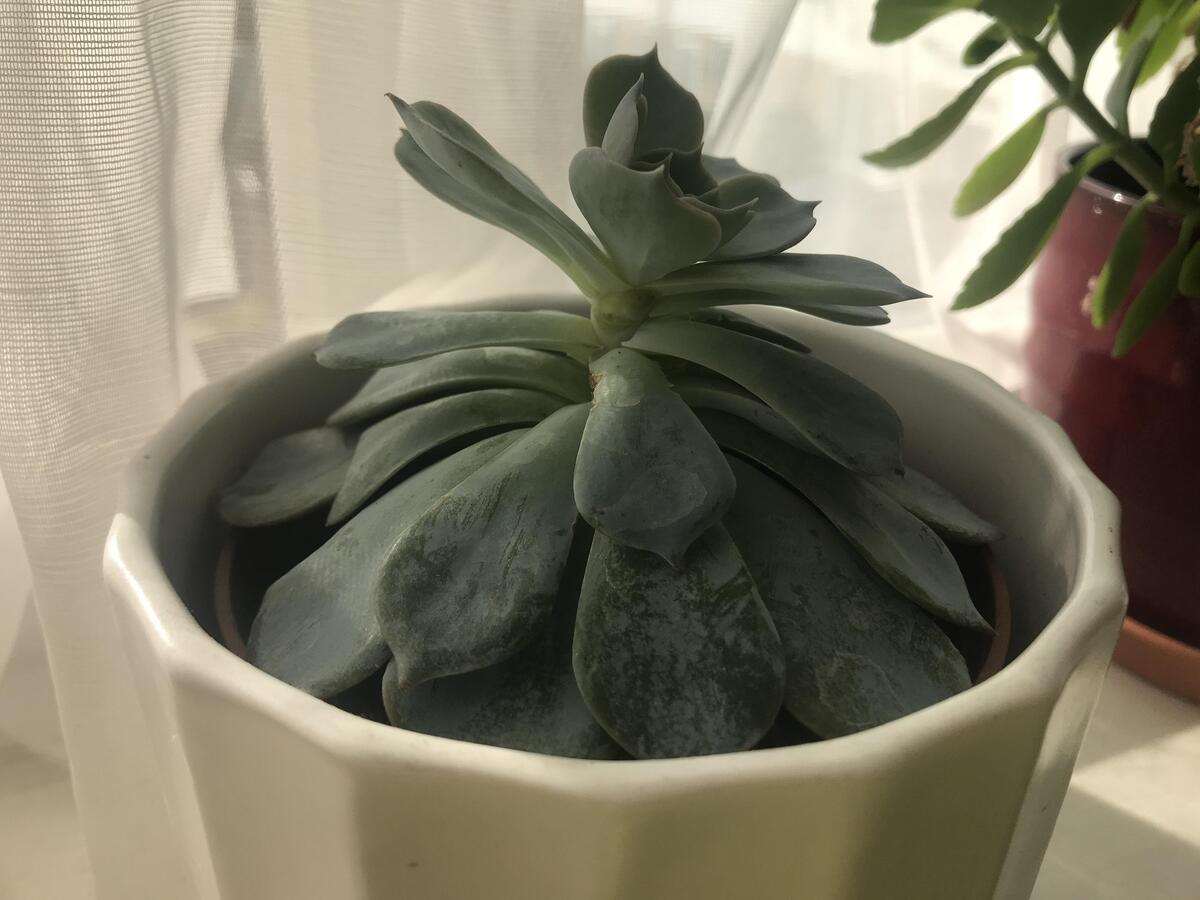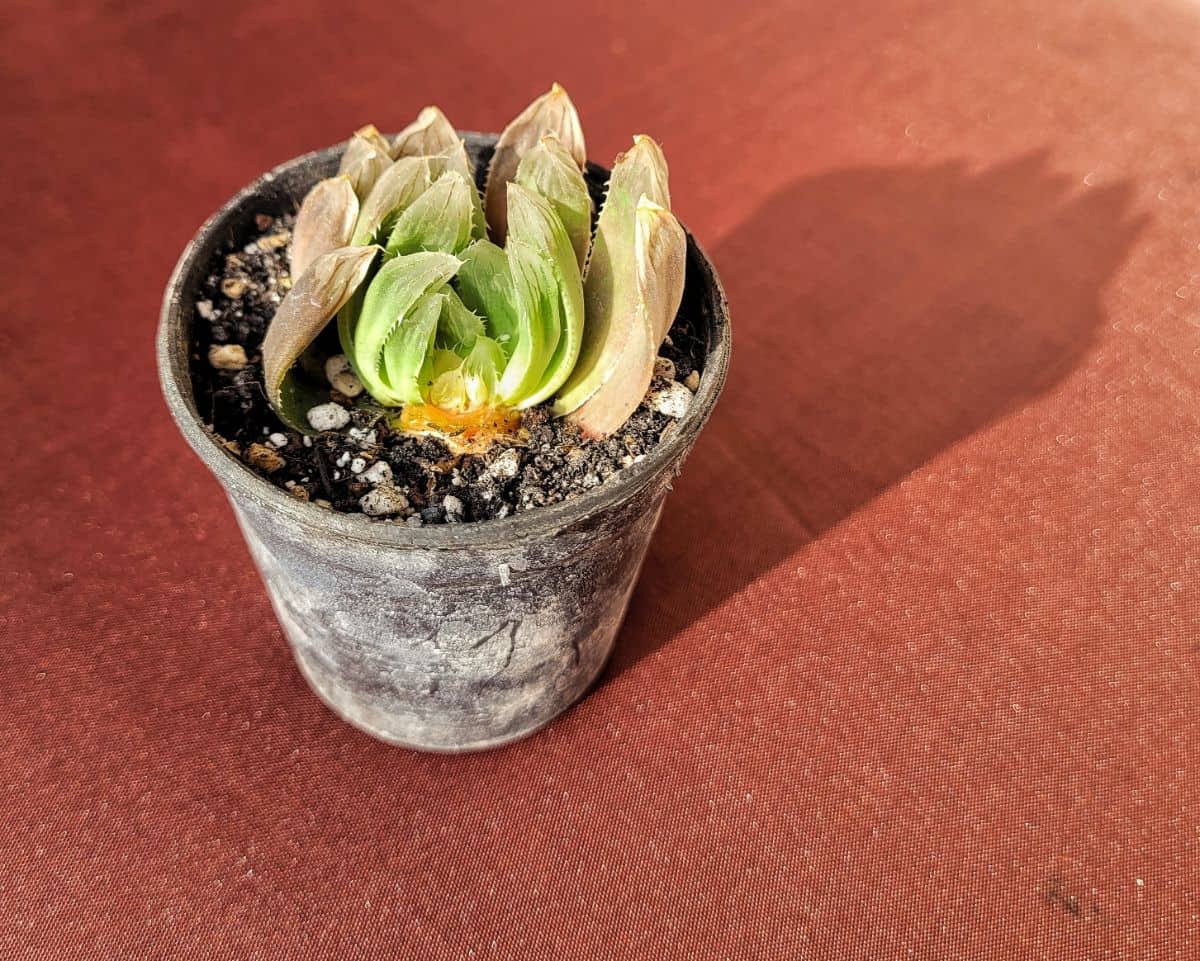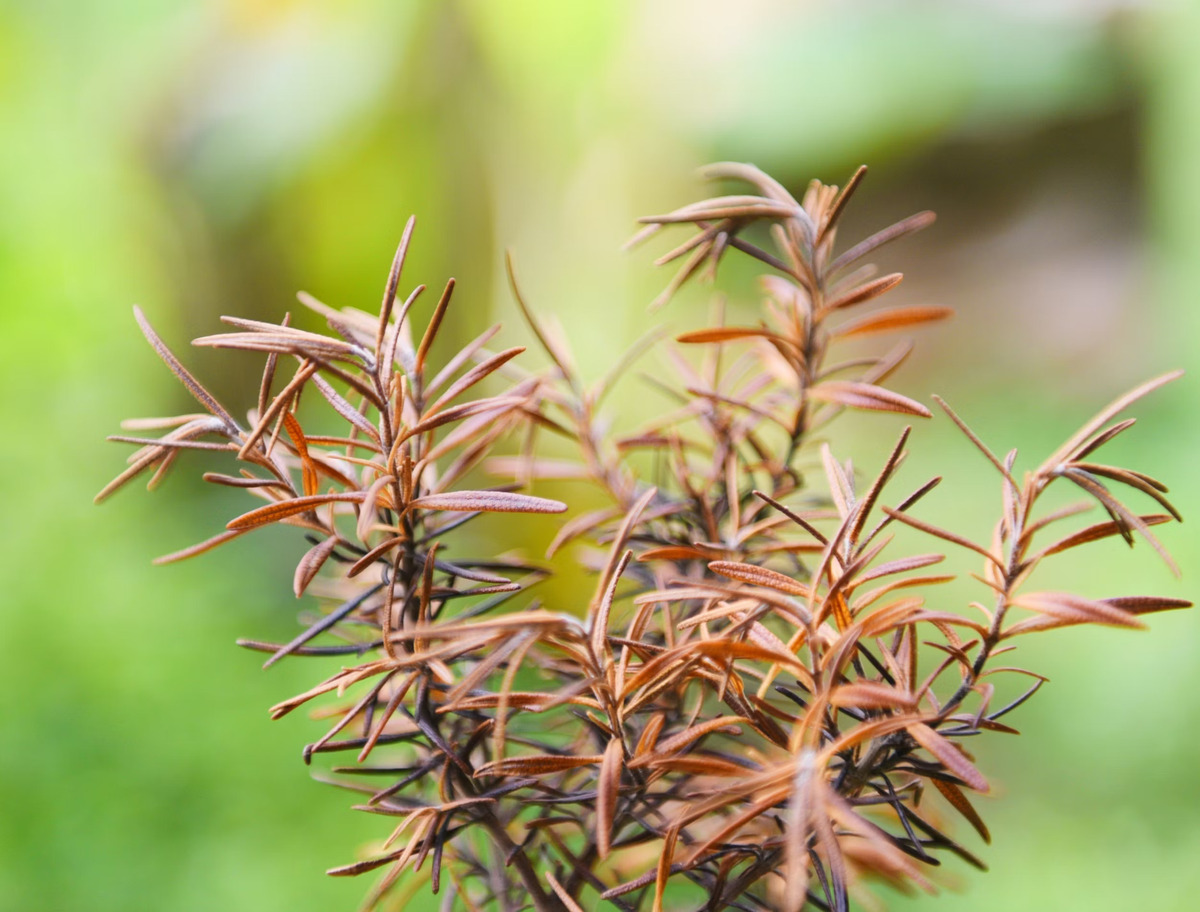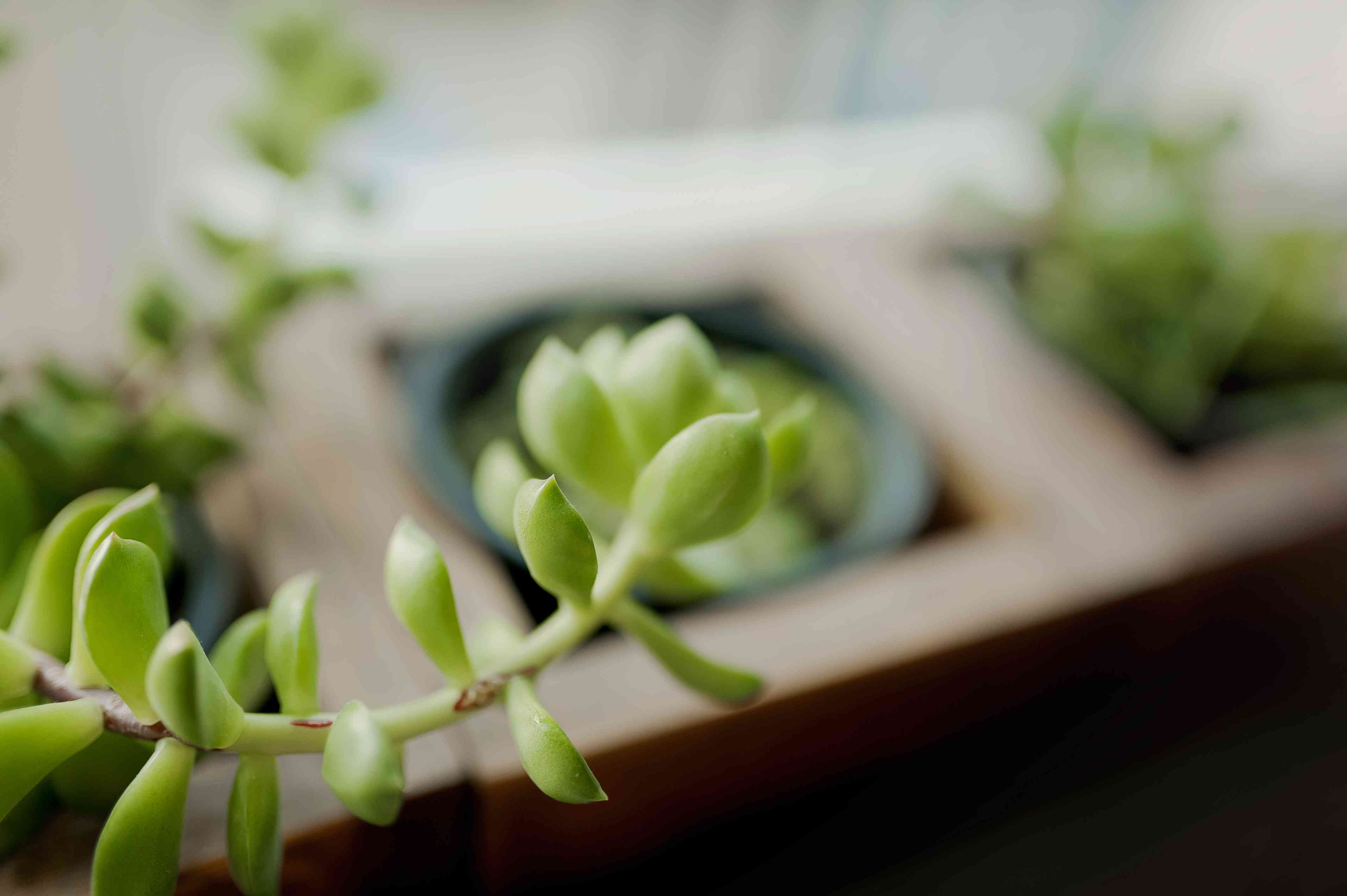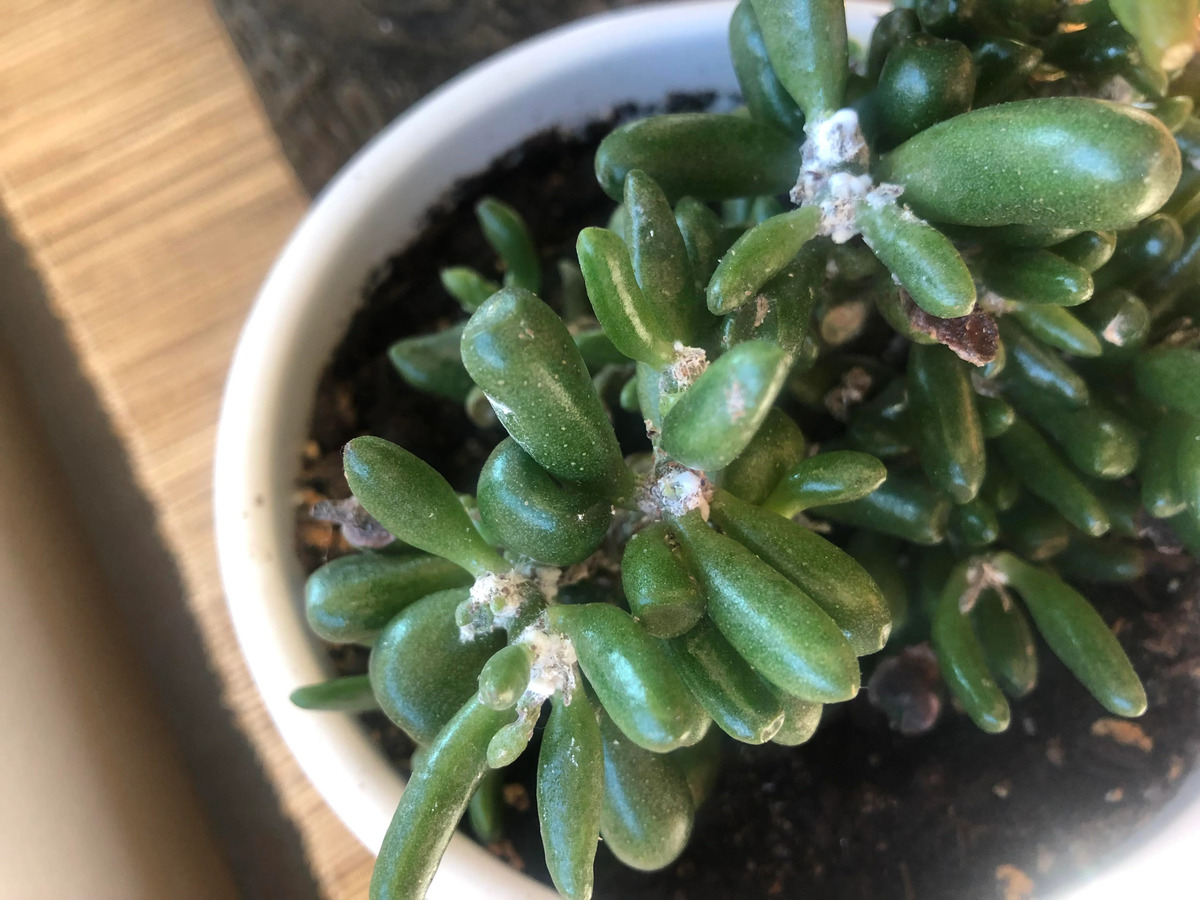Home>Types of Gardening>Ornamental Gardening>Why Are My Succulents Turning White
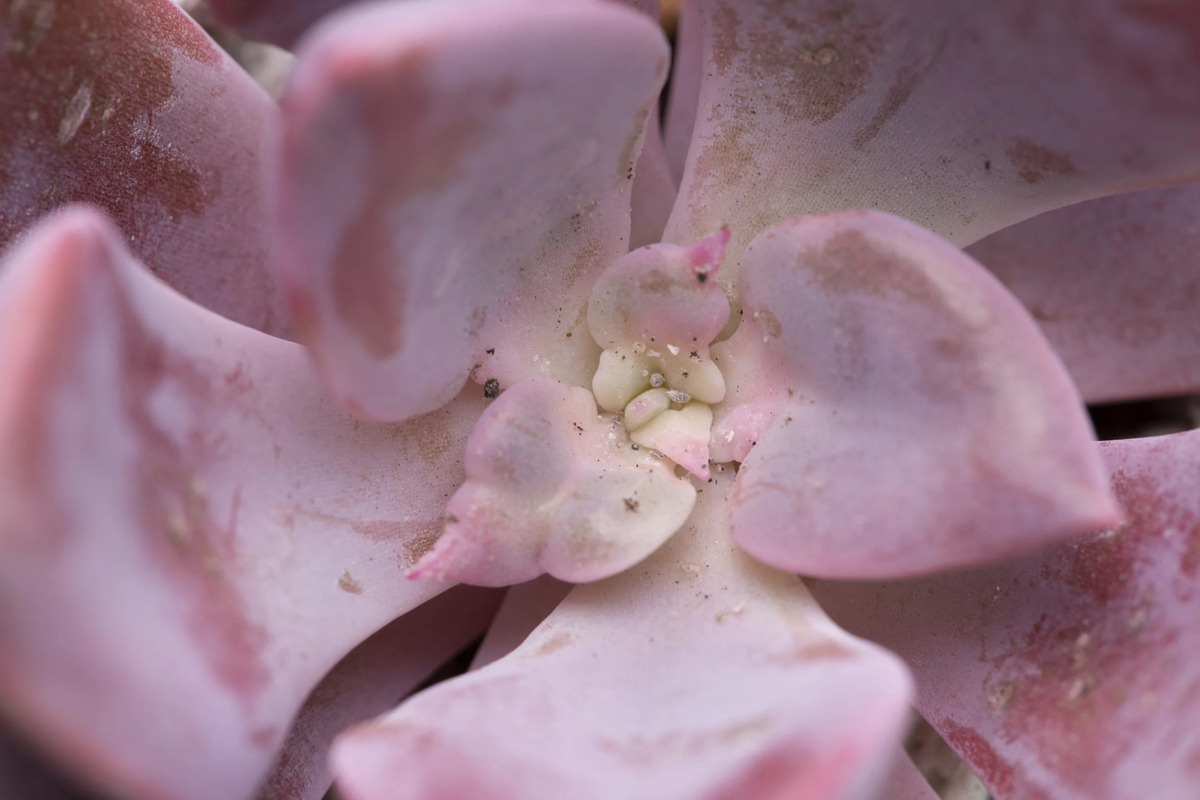

Ornamental Gardening
Why Are My Succulents Turning White
Published: December 30, 2023
Discover why your succulents are turning white and how to care for them. Get expert tips on ornamental gardening to keep your plants healthy and vibrant.
(Many of the links in this article redirect to a specific reviewed product. Your purchase of these products through affiliate links helps to generate commission for Chicagolandgardening.com, at no extra cost. Learn more)
Table of Contents
Introduction
Succulents have gained immense popularity among gardening enthusiasts due to their striking beauty and low-maintenance nature. These resilient plants come in a myriad of shapes, sizes, and colors, adding a touch of natural elegance to any indoor or outdoor space. However, despite their hardy reputation, succulents may sometimes exhibit unexpected changes in color, such as turning white, which can be a cause for concern among growers.
The sight of a once vibrant green succulent fading into a pale, almost ghostly hue can be disconcerting for any gardener. This phenomenon prompts many to question the underlying causes and seek effective remedies to restore their succulents' vitality. Understanding the reasons behind this color transformation is crucial in addressing the issue and implementing appropriate measures to ensure the plants' well-being.
In this comprehensive guide, we will delve into the various factors that can lead to succulents turning white. By unraveling the mysteries behind this phenomenon, we aim to equip succulent enthusiasts with the knowledge needed to identify, treat, and prevent their beloved plants from undergoing this unexpected transformation. Whether you are a seasoned succulent aficionado or a novice gardener, this exploration will provide valuable insights into maintaining the vibrancy and health of these captivating plants.
Understanding Succulents
Succulents are a diverse group of plants characterized by their ability to store water in their fleshy leaves, stems, or roots. This unique adaptation allows them to thrive in arid environments with minimal rainfall, making them well-suited for regions with dry climates. Their water-storing capacity is attributed to specialized cells that enable efficient water retention, granting succulents the resilience to endure prolonged periods of drought.
These plants exhibit a remarkable array of shapes and textures, ranging from the compact rosettes of Echeveria to the spiky allure of Agave. Their striking appearance, coupled with their low water requirements, has contributed to the surge in popularity of succulents as ornamental plants for both indoor and outdoor settings.
One of the most captivating features of succulents is their ability to undergo stunning color changes, adding an extra dimension to their visual appeal. While they are typically admired for their vibrant green hues, some varieties can display a spectrum of colors, including shades of red, purple, and even white. The factors influencing these color variations are multifaceted, encompassing environmental conditions, pests, diseases, and nutritional imbalances.
Understanding the unique characteristics of succulents, including their water-retaining adaptations and their propensity for color shifts, is essential in nurturing these plants effectively. By gaining insight into the innate traits of succulents, we can better comprehend the reasons behind their color changes and take proactive measures to maintain their health and vibrancy.
Causes of White Succulents
When succulents take on a white or pale appearance, it is indicative of underlying factors that warrant attention. Several potential causes can contribute to this color transformation, ranging from environmental influences to pest infestations and nutritional deficiencies. Identifying these root causes is pivotal in addressing the issue effectively and restoring the succulents to their optimal state of health and vitality.
Environmental Factors
The color changes in succulents can be influenced by environmental conditions such as excessive sunlight, extreme temperatures, or inadequate water. Prolonged exposure to intense sunlight, especially during scorching summer months, may lead to sunburn, causing the plants to develop a whitish or pale appearance. Similarly, exposure to freezing temperatures can result in frost damage, manifesting as white or translucent spots on the leaves.
Pests and Diseases
Succulents are not immune to pest infestations and diseases, both of which can trigger changes in their coloration. Mealybugs, aphids, and spider mites are common pests that can sap the plants of their vitality, causing them to turn white or pale. Additionally, fungal infections and rot, often exacerbated by overwatering or poor drainage, can lead to discoloration and deterioration of the succulents’ tissues.
Nutritional Deficiencies
The lack of essential nutrients, particularly nitrogen and chlorophyll, can result in the whitening of succulents. Nitrogen deficiency hampers the plants’ ability to produce chlorophyll, the pigment responsible for their green coloration. As a result, the leaves may turn pale or white, signaling a deficiency that needs to be rectified through appropriate fertilization.
By comprehending the diverse causes of white succulents, growers can adopt targeted strategies to mitigate these factors and restore their plants to their natural vibrancy. Addressing environmental stressors, implementing pest and disease management practices, and ensuring proper nutrition are pivotal in preserving the health and beauty of succulents.
Environmental Factors
Environmental conditions play a pivotal role in shaping the well-being and appearance of succulents. When these plants exhibit a white or pale hue, it often reflects the impact of various environmental stressors that can compromise their vitality. Understanding the specific environmental factors that can lead to this color transformation is essential in implementing targeted measures to support the succulents’ health.
Excessive Sunlight
Succulents are renowned for their love of sunlight, but prolonged exposure to intense rays, especially during the peak of summer, can have adverse effects. Sunburn is a common issue that arises when succulents receive excessive sunlight, causing their leaves to develop a whitish or pale appearance. To mitigate this, it is advisable to provide partial shade or use protective coverings during the hottest part of the day, particularly for more delicate succulent varieties.
Extreme Temperatures
Succulents are typically resilient to high temperatures, but they can suffer when exposed to extreme heat or sudden temperature fluctuations. In colder climates, frost damage can manifest as white or translucent spots on the leaves, signaling tissue damage. To shield succulents from extreme temperatures, it is beneficial to relocate them to sheltered areas during temperature extremes and provide insulation during frosty conditions.
Inadequate Water
While succulents are renowned for their water-storing capabilities, inadequate hydration can lead to color changes and diminished vigor. Insufficient watering, especially during periods of intense heat, can cause succulents to appear pale or white as they struggle to retain adequate moisture. It is crucial to strike a balance by providing sufficient water without causing waterlogging, ensuring that the plants remain hydrated and vibrant.
By recognizing the impact of environmental factors such as sunlight, temperature, and water availability, growers can take proactive steps to create optimal conditions for their succulents. Implementing strategies to mitigate excessive sunlight, protect against extreme temperatures, and maintain appropriate hydration levels is pivotal in preserving the natural beauty and resilience of these captivating plants.
Pests and Diseases
Succulents, despite their hardy nature, are susceptible to pest infestations and diseases that can compromise their health and appearance. When succulents exhibit a white or pale coloration, it may serve as a visible indicator of underlying pest or disease-related stress. Identifying common culprits and understanding their impact is crucial in implementing effective management strategies to safeguard the succulents from these threats.
Pest Infestations
Mealybugs, aphids, and spider mites are among the most prevalent pests that can afflict succulents, causing them to appear white or pale as a result of the damage inflicted. These pests feed on the plants’ sap, leading to wilting, discoloration, and overall deterioration. Mealybugs, recognizable by their cottony appearance, tend to cluster on the leaves and stems, while aphids and spider mites may congregate on the undersides of the leaves. Vigilant inspection and prompt intervention are essential in managing these pests and preserving the succulents’ vigor.
Diseases and Rot
Fungal infections and rot can also contribute to the whitening of succulents, particularly when compounded by overwatering or poor drainage. Excessive moisture can create an environment conducive to fungal growth, leading to discoloration, wilting, and tissue damage. Rot, characterized by a mushy or discolored appearance in the affected areas, can spread rapidly and jeopardize the overall health of the plants. Proper watering practices, adequate ventilation, and regular monitoring are pivotal in preventing and addressing fungal diseases and rot.
By recognizing the signs of pest infestations and diseases, growers can promptly address these challenges and protect their succulents from potential harm. Implementing integrated pest management techniques, fostering a healthy growing environment, and promptly addressing signs of infestation or disease are essential in preserving the natural beauty and resilience of succulents.
Nutritional Deficiencies
The vibrant green coloration of succulents is not only visually appealing but also serves as an indicator of their overall health and vitality. However, when succulents exhibit a white or pale appearance, it may signify underlying nutritional deficiencies that impede their ability to thrive. Understanding the role of essential nutrients and the potential consequences of their scarcity is pivotal in addressing these deficiencies and restoring the succulents to their optimal state.
Nitrogen Deficiency
Nitrogen is a fundamental nutrient for plant growth, playing a critical role in the production of chlorophyll, the pigment responsible for the green color of leaves. When succulents experience a shortage of nitrogen, their ability to synthesize chlorophyll is compromised, leading to a pale or white appearance in the leaves. This deficiency hampers the plants’ photosynthetic capacity and overall vigor, necessitating remedial measures to rectify the imbalance.
Chlorophyll Production
Chlorophyll is integral to the process of photosynthesis, enabling plants to convert light energy into chemical energy. In the absence of sufficient chlorophyll due to nitrogen deficiency, succulents may exhibit diminished photosynthetic activity, impacting their growth and resilience. Addressing nitrogen deficiency through targeted fertilization is crucial in replenishing the plants’ chlorophyll reserves and revitalizing their coloration.
Trace Element Imbalances
In addition to nitrogen, succulents rely on a range of essential trace elements for their growth and metabolic processes. Imbalances in elements such as iron, magnesium, and potassium can also contribute to color changes, manifesting as pale or whitened leaves. These imbalances may stem from inadequate availability in the growing medium or impaired uptake by the plants, necessitating the application of balanced fertilizers to rectify the deficiencies.
By recognizing the significance of nitrogen, chlorophyll, and essential trace elements in sustaining the vibrant coloration and vitality of succulents, growers can take proactive steps to address nutritional deficiencies. Implementing targeted fertilization regimens, ensuring balanced nutrient availability, and monitoring the plants’ response are pivotal in restoring the succulents’ natural beauty and promoting their overall well-being.
Treatment and Prevention
Addressing the factors contributing to the whitening of succulents involves a multifaceted approach that encompasses targeted treatments and proactive prevention strategies. By implementing measures to mitigate environmental stressors, manage pest and disease threats, and rectify nutritional deficiencies, growers can restore the succulents’ vibrancy and fortify their resilience against future challenges.
Environmental Management
Protecting succulents from excessive sunlight and extreme temperatures is essential in averting color changes induced by environmental stress. Providing partial shade during intense sunlight and relocating the plants to sheltered areas during temperature extremes can mitigate the risk of sunburn and frost damage. Additionally, maintaining appropriate hydration levels by adhering to a consistent watering regimen is pivotal in sustaining the succulents’ vigor and coloration.
Pest and Disease Control
Vigilant monitoring and prompt intervention are pivotal in managing pest infestations and diseases that can compromise the succulents’ health. Regularly inspecting the plants for signs of pests such as mealybugs, aphids, and spider mites enables early detection and targeted treatments, such as insecticidal soaps or horticultural oils. Furthermore, fostering a well-ventilated growing environment and optimizing watering practices can mitigate the risk of fungal diseases and rot.
Nutritional Enhancement
Rectifying nutritional deficiencies, particularly nitrogen and essential trace elements, is crucial in revitalizing the succulents’ coloration and overall vigor. Applying balanced fertilizers tailored to the specific needs of succulents can replenish essential nutrients and support chlorophyll production, promoting vibrant green hues. Regular soil testing and observation of the plants’ response to fertilization efforts are essential in fine-tuning the nutritional regimen to meet the succulents’ requirements.
Preventive Care
Establishing a foundation of preventive care is instrumental in safeguarding succulents from color changes and maintaining their natural beauty. This includes fostering a well-draining growing medium, ensuring adequate air circulation, and practicing mindful watering to prevent waterlogged conditions. Additionally, quarantining newly acquired plants and maintaining overall plant hygiene can mitigate the risk of introducing pests and diseases to existing succulent collections.
By integrating targeted treatments and preventive measures, growers can nurture thriving succulents that boast vibrant coloration and robust health. Proactive environmental management, vigilant pest and disease control, strategic nutritional enhancement, and preventive care collectively contribute to the long-term well-being of succulents, ensuring that they continue to captivate with their natural allure.
Conclusion
Succulents, with their captivating beauty and remarkable resilience, have captured the hearts of gardening enthusiasts worldwide. The sight of these plants turning white or pale can be a cause for concern, prompting growers to unravel the underlying factors influencing this unexpected transformation. By delving into the diverse causes of white succulents, including environmental stressors, pest and disease threats, and nutritional deficiencies, we have gained valuable insights into the complexities of maintaining these beloved plants.
Understanding the pivotal role of environmental factors, such as sunlight, temperature, and water availability, has illuminated the significance of creating optimal growing conditions for succulents. By mitigating excessive sunlight, protecting against extreme temperatures, and ensuring appropriate hydration, growers can safeguard their plants from color changes induced by environmental stress.
Furthermore, the recognition of pest infestations and diseases as potential contributors to succulents turning white underscores the importance of vigilant monitoring and proactive intervention. Managing common pests like mealybugs and aphids, as well as preventing fungal diseases and rot through well-ventilated environments and mindful watering practices, is essential in preserving the succulents’ vitality and coloration.
Addressing nutritional deficiencies, particularly nitrogen and essential trace elements, emerges as a critical aspect of revitalizing succulents and sustaining their vibrant green hues. By implementing targeted fertilization regimens and closely observing the plants’ response, growers can replenish essential nutrients and support chlorophyll production, promoting the succulents’ overall well-being.
Embracing a holistic approach that encompasses environmental management, pest and disease control, nutritional enhancement, and preventive care is instrumental in nurturing thriving succulents. By integrating these measures into their cultivation practices, growers can ensure that their succulents continue to enchant with their natural allure, vibrant coloration, and enduring resilience.
In the journey of caring for succulents, the revelation of their color changes serves as a testament to the intricate interplay of environmental, biological, and nutritional factors. By deepening our understanding of these dynamics and implementing targeted strategies, we embark on a shared commitment to preserving the beauty and vitality of these remarkable plants for generations to come.

